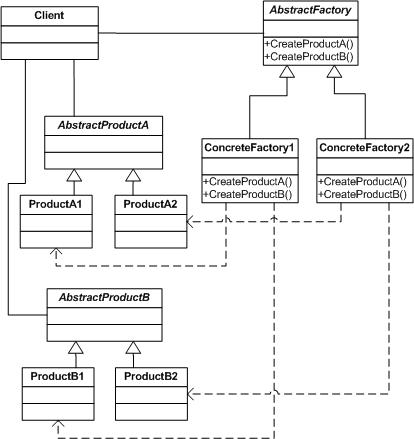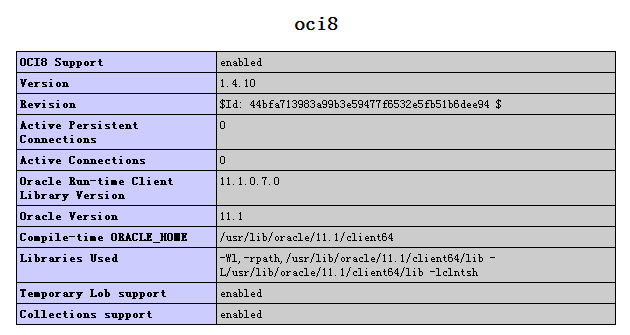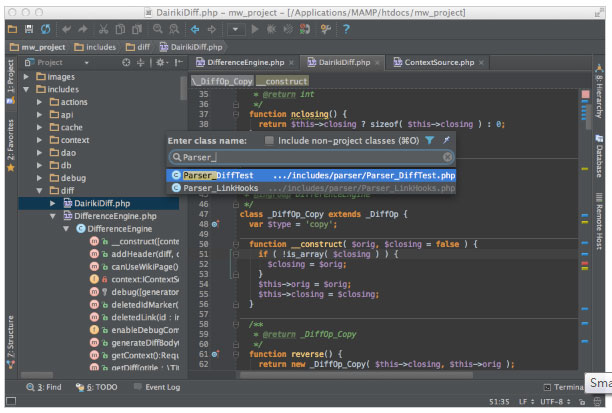|
|
這么說還不能很了解,那我們就根據實際的例子結合來講講。
(1) this
復制代碼 代碼如下:
<?php
class UserName
{
//定義屬性
private $name;
//定義構造函數
function __construct( $name )
{
$this->name = $name; //這里已經使用了this指針
}
//析構函數
function __destruct(){}
//打印用戶名成員函數
function printName()
{
print( $this->name ); //又使用了this指針
}
}
//實例化對象
$nameObject = new UserName( "heiyeluren" );
//執行打印
$nameObject->printName(); //輸出: heiyeluren
//第二次實例化對象
$nameObject = new UserName( "php" );
//執行打印
$nameObject->printName(); //輸出:php
?>
我們看,上面的類分別在行和行使用了this指針,那么當時this是指向誰呢?其實this是在實例化的時候來確定指向誰,比如第一次實例化對象的時候(行),那么當時this就是指向$nameObject對象,那么執行行的打印的時候就把print( $this-><name )變成了print( $nameObject->name ),那么當然就輸出了"heiyeluren"。第二個實例的時候,print( $this->name )變成了print( $nameObject->name ),于是就輸出了"php"。所以說,this就是指向當前對象實例的指針,不指向任何其他對象或類。
(2)self
首先我們要明確一點,self是指向類本身,也就是self是不指向任何已經實例化的對象,一般self使用來指向類中的靜態變量。
復制代碼 代碼如下:
<?php
class Counter
{
//定義屬性,包括一個靜態變量
private static $firstCount = ;
private $lastCount;
//構造函數
function __construct()
{
$this->lastCount = ++selft::$firstCount; //使用self來調用靜態變量,使用self調用必須使用::(域運算符號)
}
//打印最次數值
function printLastCount()
{
print( $this->lastCount );
}
}
//實例化對象
$countObject = new Counter();
$countObject->printLastCount(); //輸出
?>
我們這里只要注意兩個地方,第行和第行。我們在第二行定義了一個靜態變量$firstCount,并且初始值為,那么在行的時候調用了這個值得,使用的是self來調用,并且中間使用"::"來連接,就是我們所謂的域運算符,那么這時候我們調用的就是類自己定義的靜態變量$frestCount,我們的靜態變量與下面對象的實例無關,它只是跟類有關,那么我調用類本身的的,那么我們就無法使用this來引用,可以使用self來引用,因為self是指向類本身,與任何對象實例無關。換句話說,假如我們的類里面靜態的成員,我們也必須使用self來調用。
(3)parent
我們知道parent是指向父類的指針,一般我們使用parent來調用父類的構造函數。
復制代碼 代碼如下:
<?php
//基類
class Animal
{
//基類的屬性
public $name; //名字
//基類的構造函數
public function __construct( $name )
{
$this->name = $name;
}
}
//派生類
class Person extends Animal //Person類繼承了Animal類
{
public $personSex; //性別
public $personAge; //年齡
//繼承類的構造函數
function __construct( $personSex, $personAge )
{
parent::__construct( "heiyeluren" ); //使用parent調用了父類的構造函數
$this->personSex = $personSex;
$this->personAge = $personAge;
}
function printPerson()
{
print( $this->name. " is " .$this->personSex. ",this year " .$this->personAge );
}
}
//實例化Person對象
$personObject = new Person( "male", "");
//執行打印
$personObject->printPerson(); //輸出:heiyeluren is male,this year
?>
我們注意這么幾個細節:成員屬性都是public的,特別是父類的,是為了供繼承類通過this來訪問。我們注意關鍵的地方,第行:parent::__construct( "heiyeluren" ),這時候我們就使用parent來調用父類的構造函數進行對父類的初始化,因為父類的成員都是public的,于是我們就能夠在繼承類中直接使用this來調用。
總結:
this是指向對象實例的一個指針,self是對類本身的一個引用,parent是對父類的引用。
基本上我所了解就這么多,肯定有理解錯誤之處,請高手指出!
php技術:PHP5中的this,self和parent關鍵字詳解教程,轉載需保留來源!
鄭重聲明:本文版權歸原作者所有,轉載文章僅為傳播更多信息之目的,如作者信息標記有誤,請第一時間聯系我們修改或刪除,多謝。



